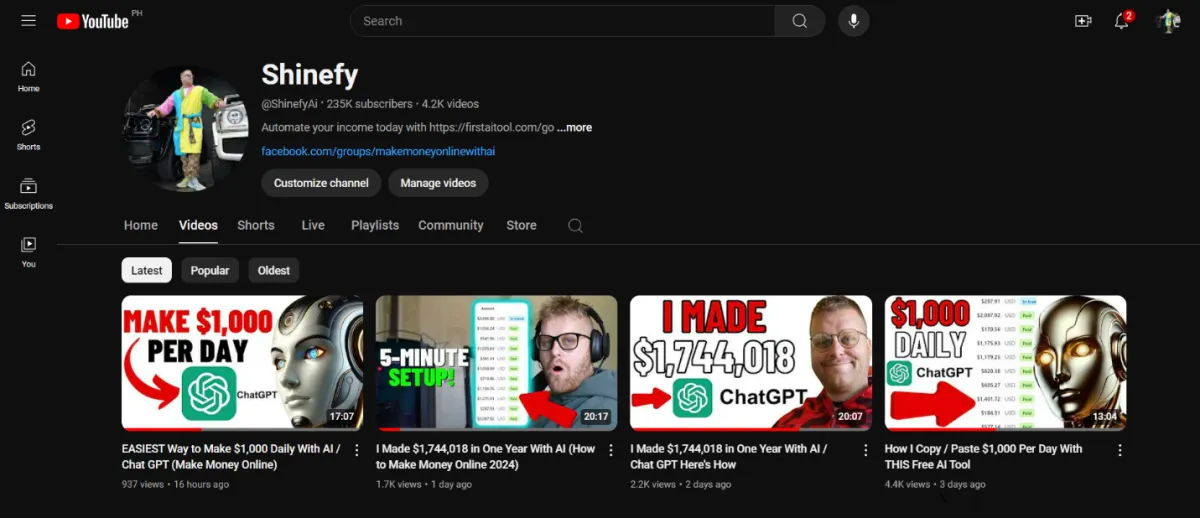
September 21, 2024 by Shinefy

Online Marketing Strategies and Techniques for Small Businesses
Online Marketing totally changed how businesses compete for the audience’s attention in the last couple of years.
With the right software, small business can create a low-cost strategy that demands only a small team to work, and have a big return in reach and awareness.
However, if promoting a brand online is easy, it also means that there is a lot of competition. Here are a couple of things that you should watch out for:
Search Engine Optimization (SEO)
Having a strong online presence is equivalent to having your website or product appear at the top of search results when someone searches for a relevant keyword. If your website is there, it means it is worth it, right?
The techniques, actions, and tools that make your brand climb those spots are called Search Engine Optimization, or SEO for short. Its goal is to make Google recognize the value and relevance of what you have to offer, so it favors your brand when users search for specific keywords.
Pay attention to on-page content. On-page content refers to product titles and descriptions, images, any blogs or other content you might have. You want to make sure that content naturally uses language your customers might use when searching for related products and answers their questions.
Tags are important as well. Title tags, which are like headlines for a search engine, help the search engine figure out what each page is about. Each page of your website should have its own unique title tag.

Content Marketing
Creating relevant, useful, and attractive content for people looking to purchase your product is a great way to bring traffic to your site. It also provides helpful information that positions your brand's identity, personality, and authority.
Content Marketing involves planning and sharing posts, articles, news, videos, and any sort of material that brings value to your audience.
This kind of marketing isn’t only about information, but also timing and presentation. What, how, and when you write are points to take into consideration.

Advertise on social media platforms
Social Media Marketing is focused on the personification of your brand. You should be available for answering questions, as well as interacting with people and subjects that are inserted in the same universe as your business.
Social media is a great place to focus because you know people are spending time on social media platforms. If your audience spends a lot of time on Instagram but not Twitter, you’ll want to focus your time and effort on Instagram.
You can use photos and videos in your ads, but start small. A photo ad can be a great way to get your product in front of new people. Try simple, engaging imagery of your product in use and adjust your tactics based on how well it performs in the first couple of weeks.

Boost your organic social presence
While being on the topic of social media. One of the easiest and most effective strategies is to give a little extra love to your social media channels, and make sure they’re stocked with vibrant images and engaging videos.
If you already have a pretty solid presence on social media platforms with a core audience, this is the time to build on that. Increase your post frequency and invest a bit more time in creating rich visual content and short, engaging videos. Boosting engagement with your followers increases the chance for brand awareness with their followers. Encourage sharing, and incorporate user-generated content.
Consider using influencer marketing
If your social media presence needs some work, now’s the time to try out this method.
Influencer marketing involves partnering with individuals who have a strong following and influence in your industry or niche. They have the power to “influence” an audience’s purchasing behavior.
These influencers can range from social media personalities to industry experts or bloggers. By collaborating with influencers, you can tap into their established audience and credibility to promote your products or services. Working with the right influencer can get your product in front of a huge number of potential customers, increasing your brand awareness.
To make the best use of influencer marketing, make sure your targeted influencer’s following aligns with your target audience, and that their values align with your brand.
Do not forget Email Marketing
Email continues to be one of the most effective marketing tools in the ecommerce toolbox. Collect as many email addresses as you can — customers, prospective customers, people interested in your events, etc. When you launch, you’ll be able to send an email to all of those people letting them know that they can visit your store online.
This can be a good time to consider offering a promotion to those on your email list, or even a referral discount. Some brands use pop-up boxes to prompt users to enter their email addresses in return for a small promotion, like 15% off their first purchase, or free shipping.
This strategy involves planning informative and engaging content combined with action-based and time-based triggers.
The idea is to create a path that deepens the relationship between a lead and a brand by being in close and constant contact, all of that without having to manually send and respond to these interactions.
